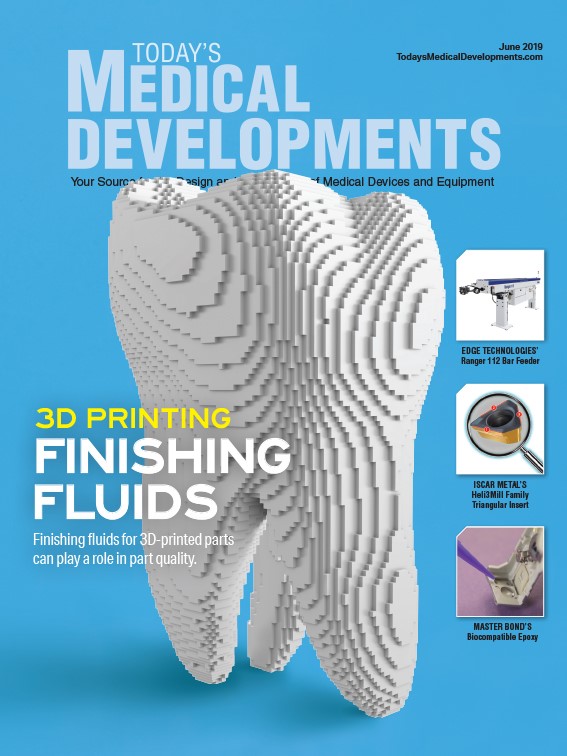
PHOTO COURTESY OF MOLDWORX LLC

Gilbert, Arizona-based Moldworx LLC recently provided a custom solution for a medical manufacturer that automates hypodermic needle production using overmolding to reduce cost and improve productivity. Moldworx engineers designed and developed an A-series, single-cavity injection mold with slides. An operator hand-loaded the needle into the mold, before the machine molded a finished assembly to test the design.
“This allowed us to overmold the needle to eliminate a step in the current manufacturing process, reducing overall production time and cost,” says Moldworx President Jim Taylor. “We encountered some unique issues in the process, including the additional challenge of making this all possible in a horizontal press, not a typical vertical press.”
Next, the team designed a production mold and automation to robotically feed the needles into the mold cavity, eliminating the operator.
“We designed the mold to integrate with the automation and the automation to work in unison with the mold,” Taylor explains. “To accelerate the timeline, the entire automation cell was built in parallel with the mold.”
One challenge for Moldworx was singulating thousands of delicate, tiny, bulk-packed needles. Engineers designed and developed a singulator and hopper to introduce one needle at a time to the assembly cell.
A robot affixed to the injection molding machine picks up each needle and indexes it in front of a set of high-resolution inspection cameras to ensure the needle tip is not damaged or bent, which would cause the needle to be rejected.
The robot places the needle into the mold and the mold closes for the injection cycle. When the mold opens, the robot removes the molded assembly and places a newly inspected needle into the mold. All these actions require inspection and verification to exacting tolerances.
After completing the single- cavity mold and automation, with the customer testing and approving parts, Moldworx built a multi-cavity mold with the required integrated automation cells. The 4-cavity production mold will quadruple the automation cell production to keep up with demand.
Moldworx LLC
https://moldworx.com

Explore the June 2019 Issue
Check out more from this issue and find you next story to read.
Latest from Today's Medical Developments
- Lumetric's Scanning Tubing Measurement System
- Latest advancements in machine tool technology
- Visit Okuma America at IMTS 2024
- March 2024 USMTO orders were $354.7 million
- AM for Aircraft Cockpit Interior Components
- Arizona WearTech Center member receives new patent
- SABIC showcased progress in plastic innovation
- Ink for 3D-printing flexible devices, no mechanical joints





